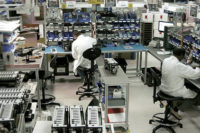The Small Business Jobs and Credit Act of 2010 promises to spur investment in productivity-enhancing technology.
On Sept. 28, President Obama signed into law the Small Business Jobs and Credit Act of 2010.
The law establishes a $30 billion fund to provide capital to small community banks to spur small business lending. Banks will pay a 5 percent dividend on the capital, but dividend payments would decrease to as low as 1 percent as banks increase small business lending relative to a 2009 base level. Banks that do not increase their small business lending in the first two years after receiving the capital will pay a 7 percent dividend. To encourage timely repayment of the government, the rate increases to 9 percent after 4.5 years.
The law also provides a number of tax incentives. For example, small businesses will be able to immediately expense up to $250,000 in capital spending. The law also extends tax provisions that allow all businesses-large and small-to more quickly write off purchases of new equipment and other depreciable property.
To encourage investments in small businesses, the law excludes some small business stock sales from capital gains taxes. Small-business deductibles for start-up costs double to $10,000. The law also frees up capital by allowing small businesses to carry back general business tax credits to offset taxes paid over the previous five years, instead of the current one-year carry back. Anything left over can be carried forward for 20 years.
Although opponents of the law have criticized it as another government bailout similar to the $700 billion Troubled Asset Relief Program that propped up Wall Street last year, we welcome the measure. The banking provisions could translate into $300 billion in lending to small businesses, which have had trouble getting credit since the financial crisis. At the same time, the tax provisions should encourage wary CEOs to start writing checks for productivity-enhancing technology.
“Manufacturers commend the Senate for temporarily extending bonus depreciation and enhancing expensing,” says Dorothy Coleman, vice president of tax and domestic economic policy for the National Association of Manufacturers. “These critical tax incentives will stimulate business investments in machinery and equipment and enable manufacturers of all sizes to contribute to economic recovery and job growth.”
Indeed, we welcome any measure that will get companies investing again. In July, nonfinancial companies in the Standard & Poor’s 500 reported a record total of $837 billion in cash-enough to pay 2.4 million people $70,000 annual salaries for five years. That money needs to be put to work building assembly plants; buying robots, presses and screwdrivers; and inventing “the next big thing.”
Get our new eMagazine delivered to your inbox every month.
Stay in the know on the latest assembly trends.
SUBSCRIBE TODAY!Copyright ©2024. All Rights Reserved BNP Media.
Design, CMS, Hosting & Web Development :: ePublishing





